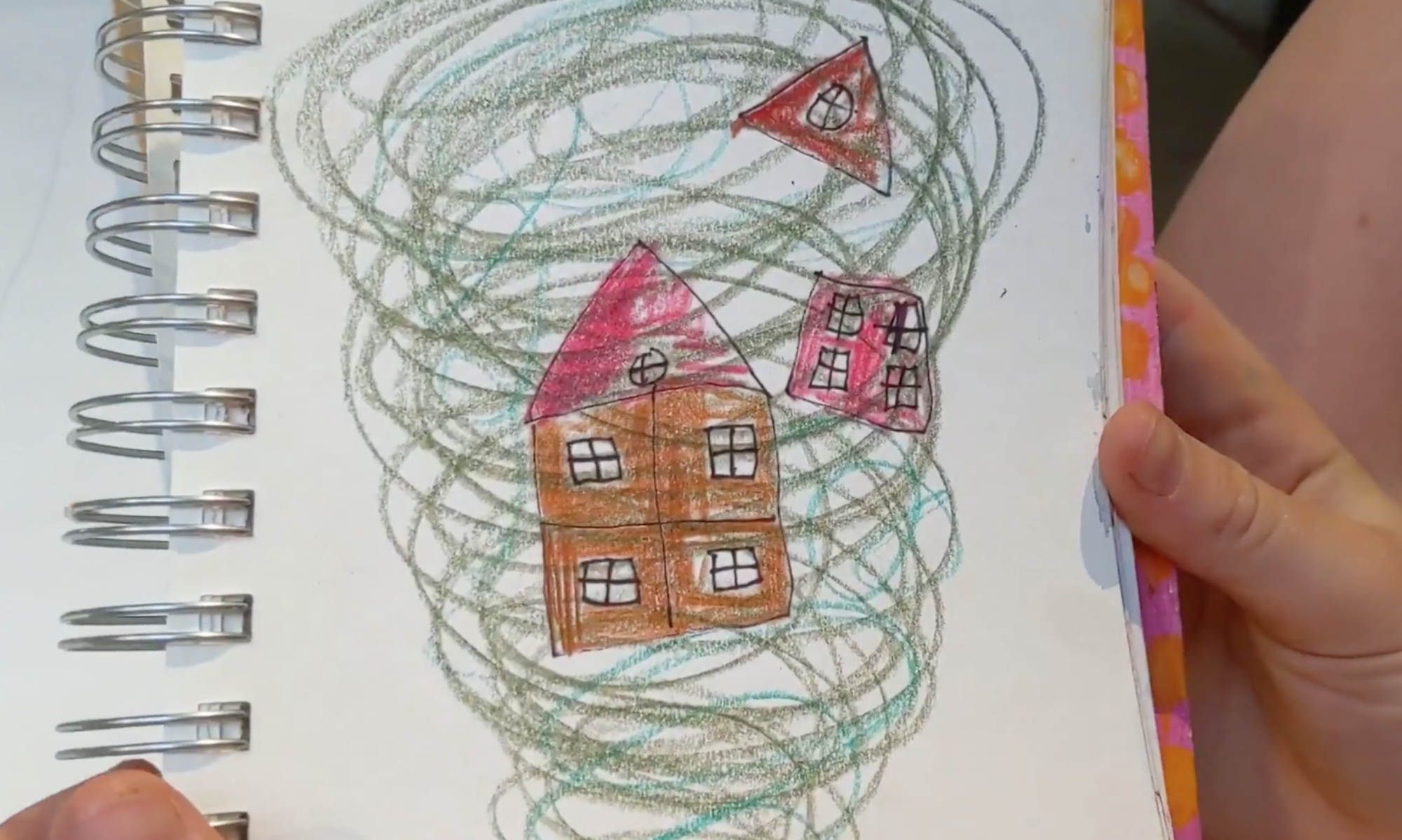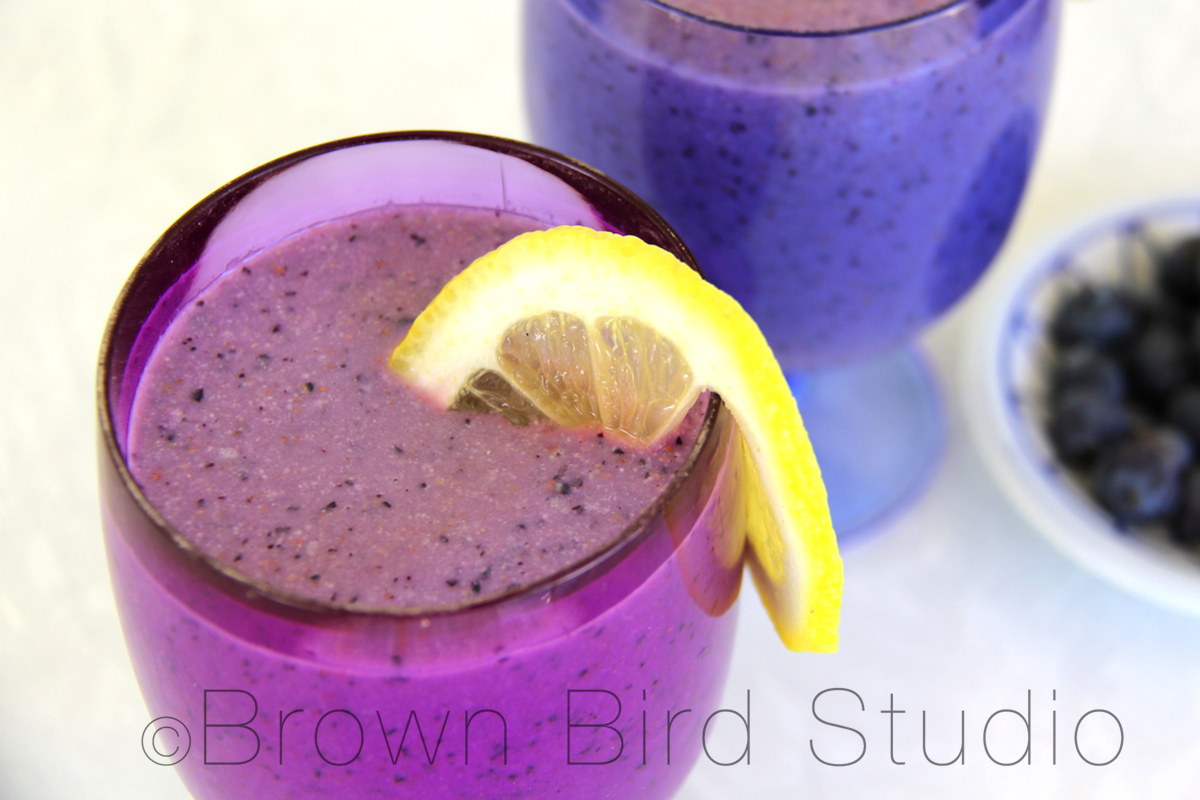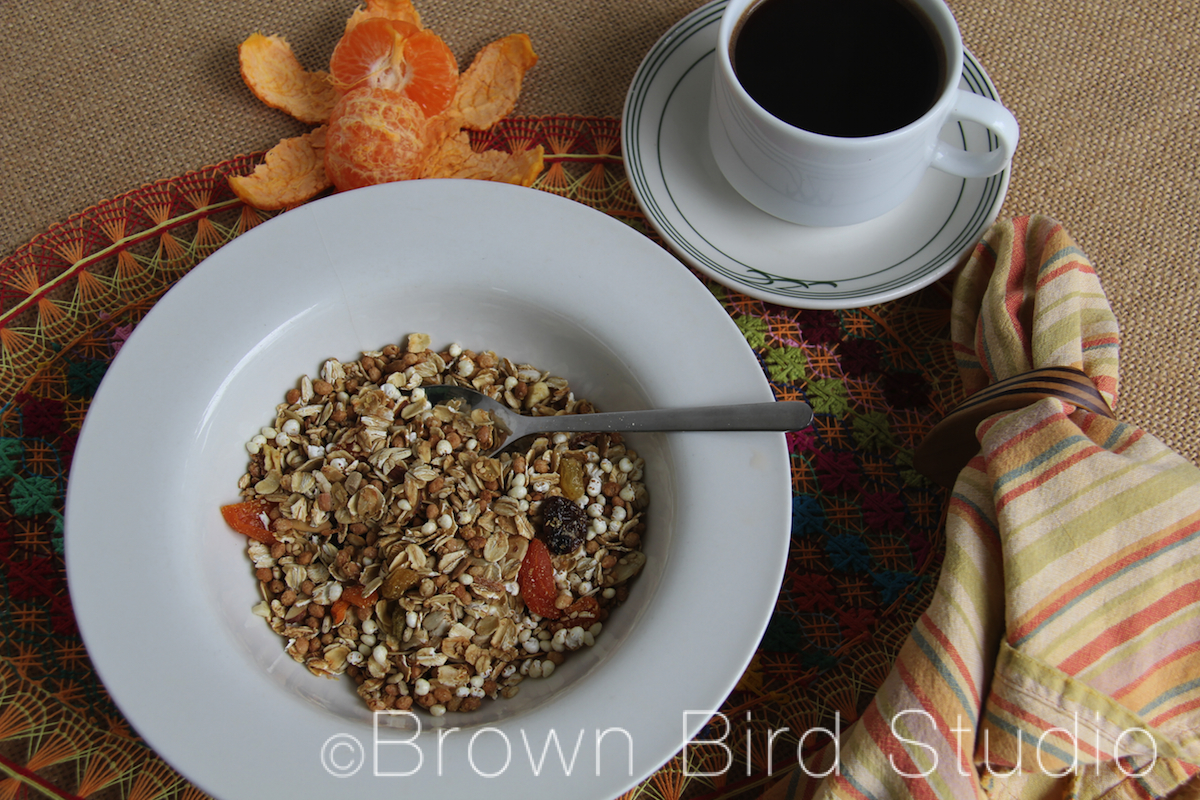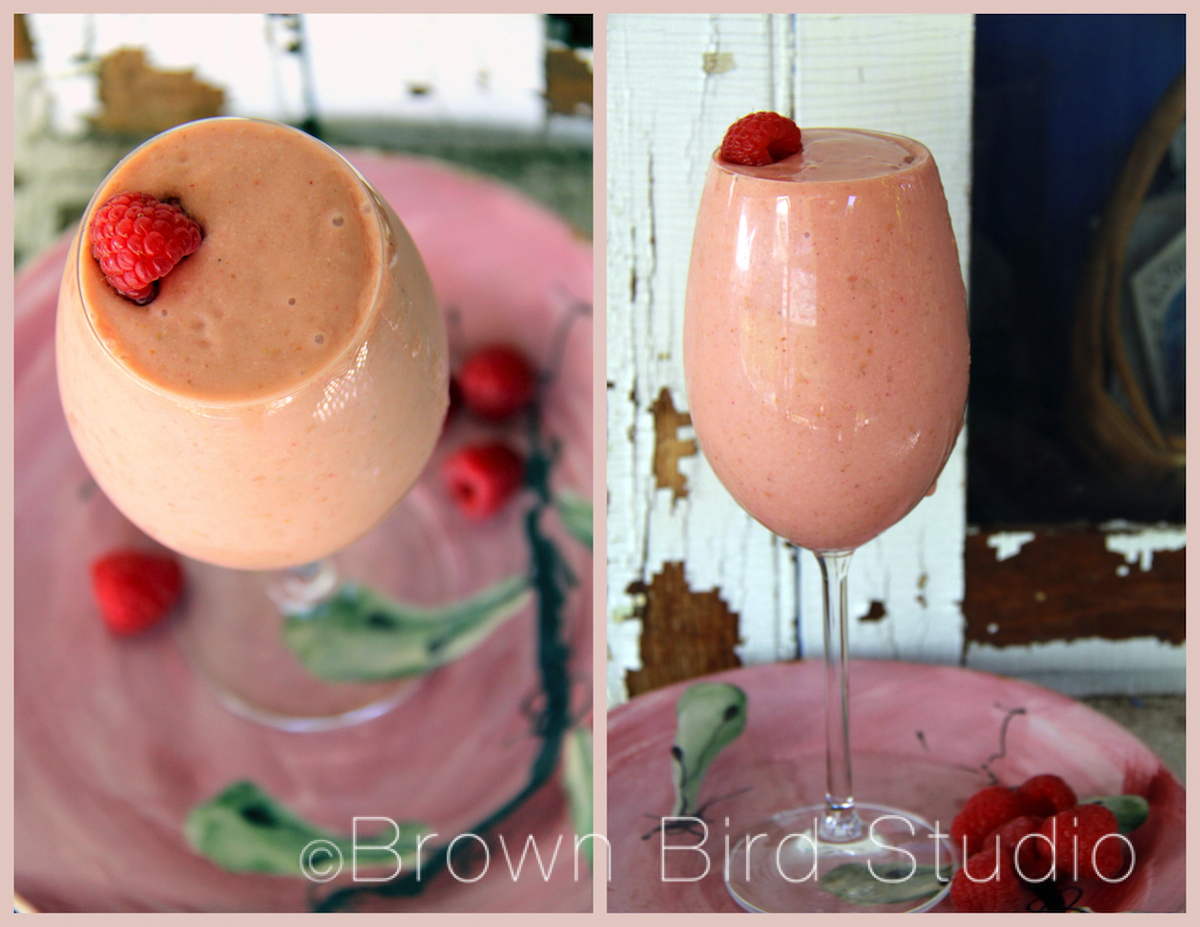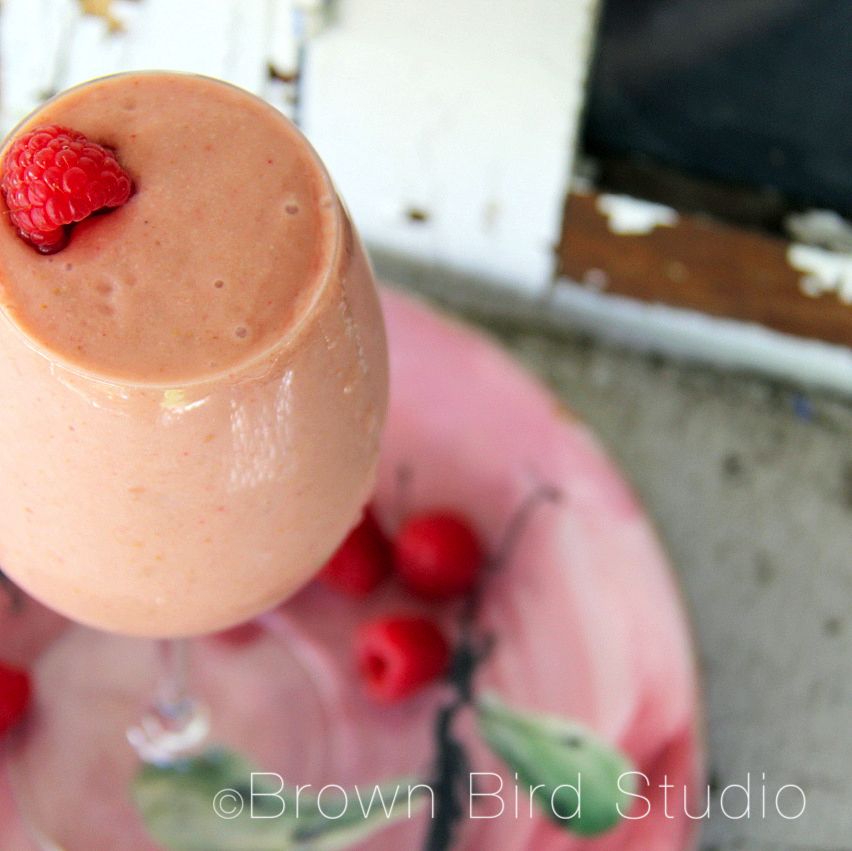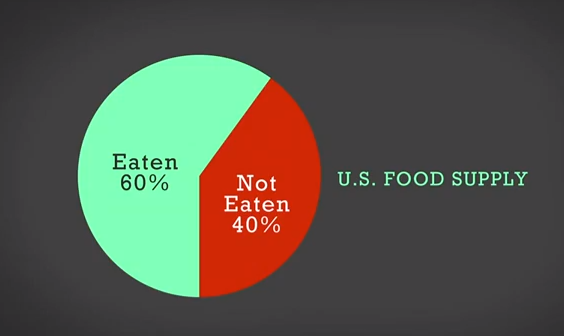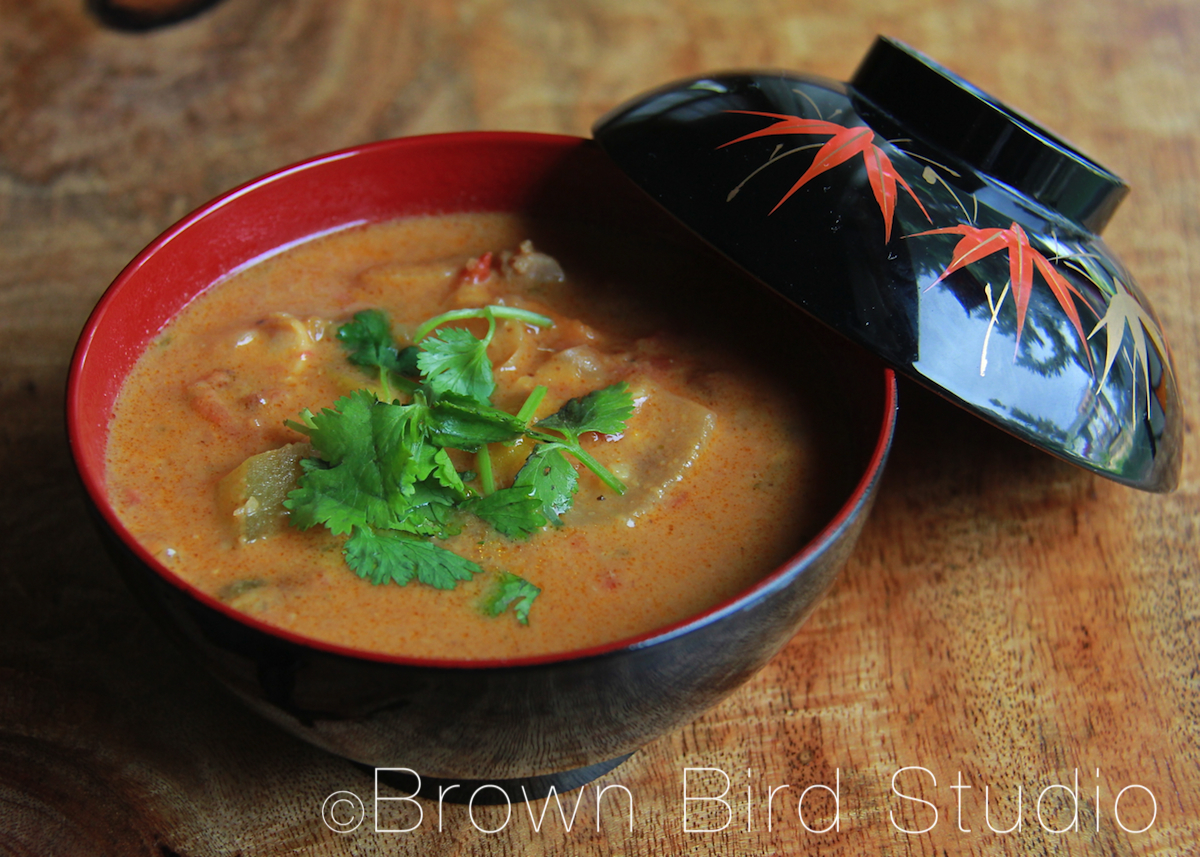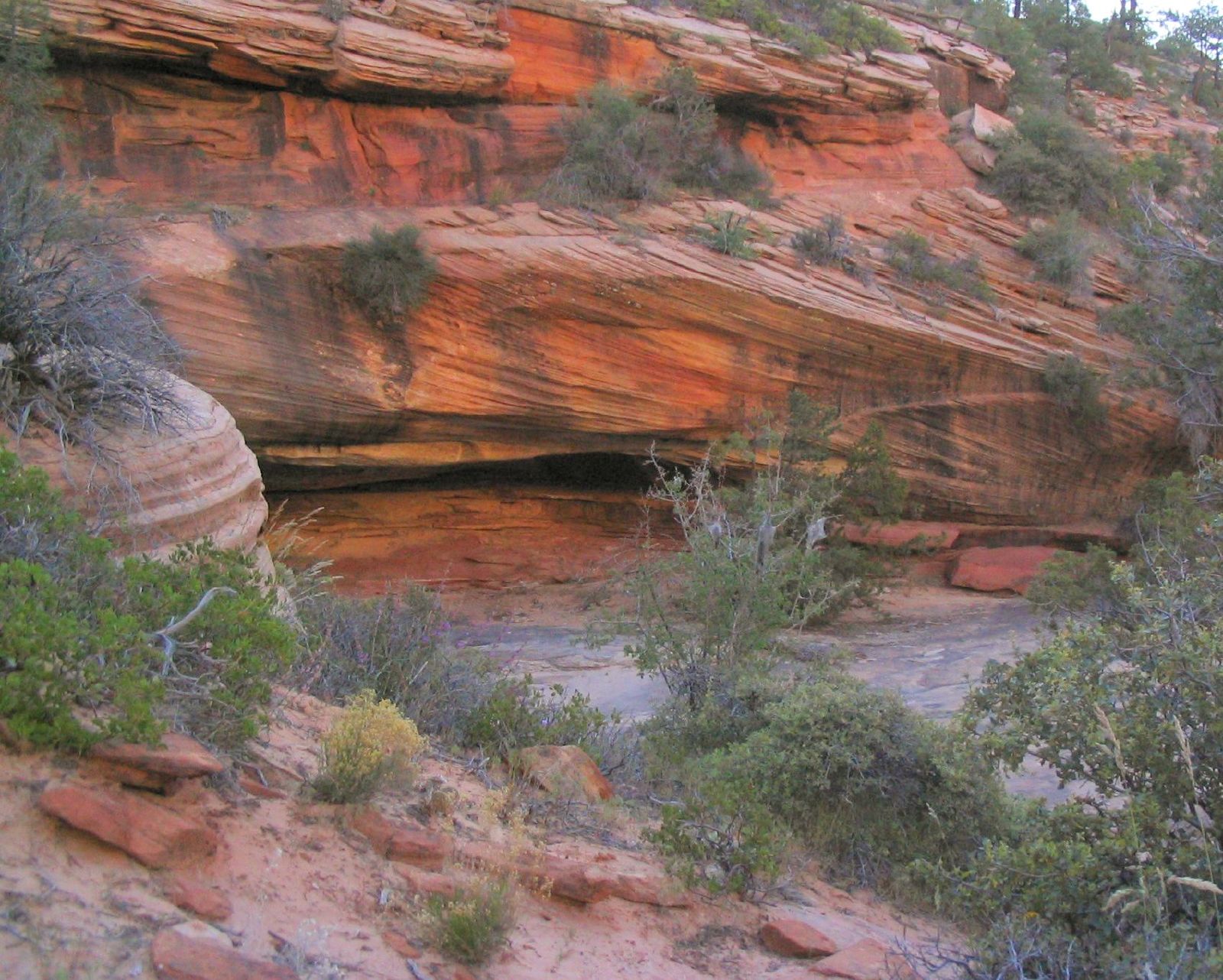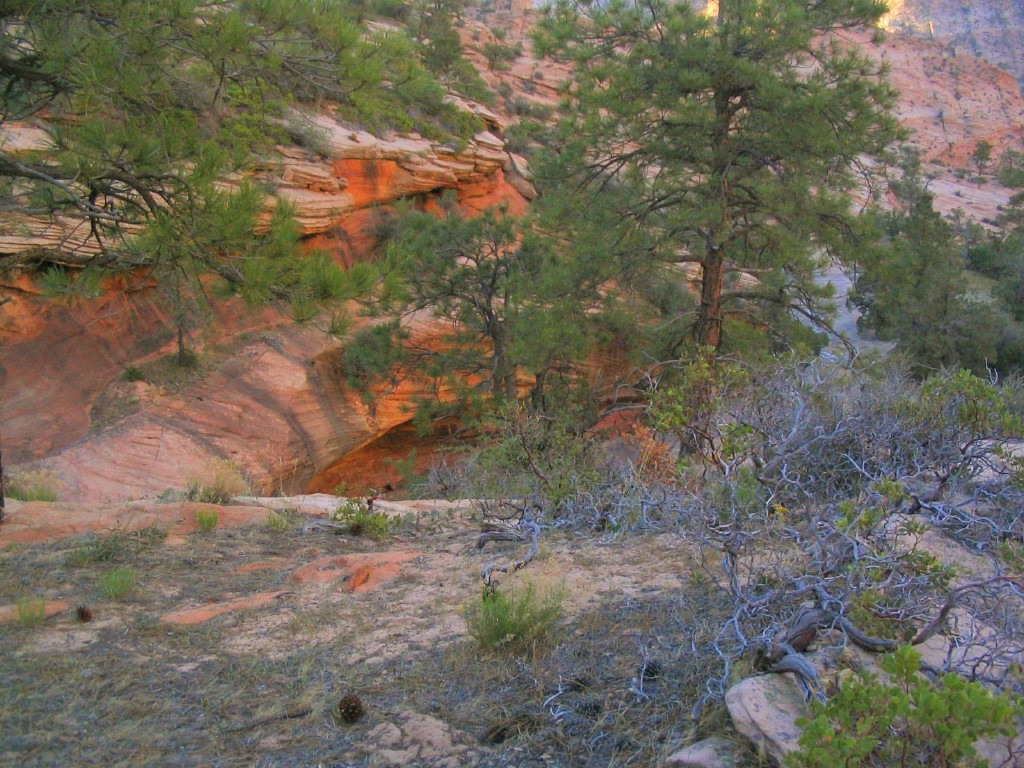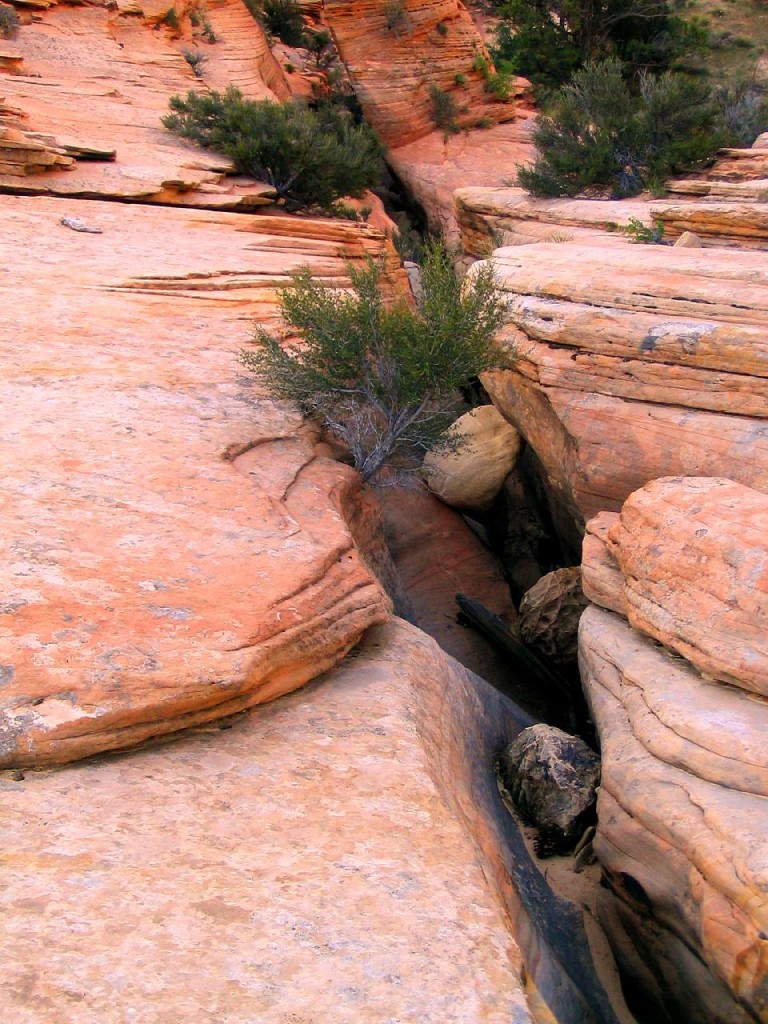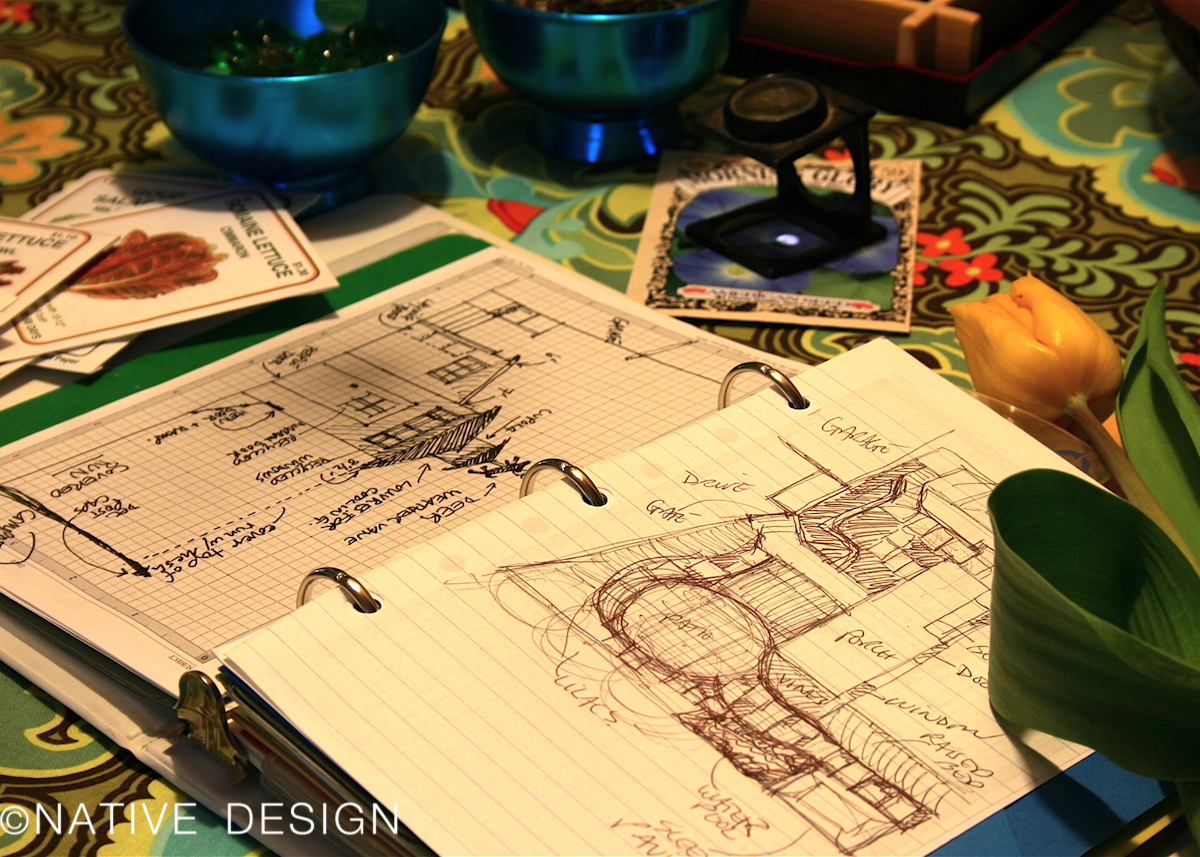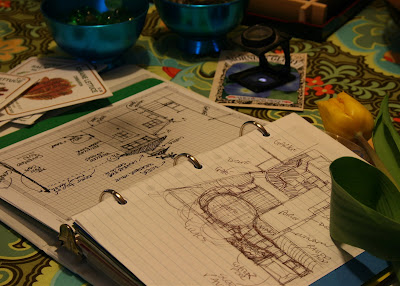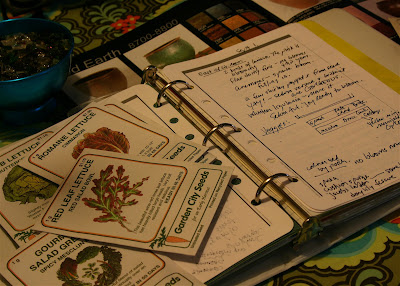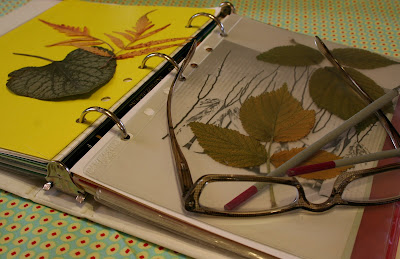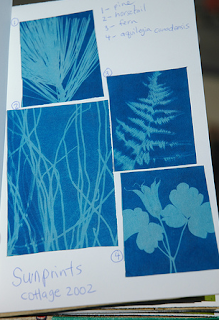No Nuts Granola
Saturday Smoothies: Peach Almond Raspberry Grin
Saturday Smoothies: new weekly feature
Think-Eat-Save: UN World Environment Day is Today
World Environment Day is today, Wednesday, June 5th, 2013. This year, the theme for WED is Think-Eat-Save, focusing on ways we can alleviate the incredible food waste problems that contribute to world hunger and environmental degradation.
On a TEDx talk, Peter Lehner shares how he began working on food waste issues when he backpacked 30 days of food in his mountain climbing years. It’s true that if you have to carry your food for miles, you pack carefully and considerately — and you don’t waste a bit of it! His talk is 14 minutes long by well worth watching. (click here to watch Peter Lehner’s TEDx talk)
That’s in the US and Canada … Worldwide the amount of food wasted — on average — is slightly less, but still outrageously dangerous for Earth’s future. Luc Gnacadja, Executive Secretary UN Convention to Combat Desertification, says:
Food is produced at such a high environmental cost. Yet, every year about one third of it is either wasted or lost. Meantime, one in seven people still goes to bed hungry. This enormous drain on our limited natural resources is shocking and morally unacceptable.
- Whole Foods offers 12 ways to minimize food waste.
- The US EPA’s list of ways to reduce food waste has some different ideas.
- This is so what we did in our college days: dumpster diving. I love that the instructors of this workshop call this particular dumpster, “The Golden Dumpster.”
- Menu planning is an easy — and effective — way to reduce food waste in your home. I plan our menus weekly. Simple Mom has menu planning resources and tips including a downloadable grocery list pdf. She writes about why it helps to plan menus, and how she uses the internet for her menus here.
- I use Evernote to plan our menus. It’s hugely helpful and — super easy with the Evernote web clipper browser extension — to capture recipes from the web, try them out and make notes on my adaptations to the recipes. I think I’ll write a whole blog post on how I use Evernote for anything food-related. Watch for it! 🙂
- Here’s a brand new post from Ecocentric also on reducing food waste. Well written!
Lehner (in his TEDx talk) refers to a game they called “Journey to the back of the fridge,” when they would look for the multi-colored mold growing on an assortment of food. We have changed our food deal at the Carney-Shaughnessy household these days. We eat 90% vegetarian, and use aLOT of fresh fruits and vegetables, so it’s doubly critical that we shop/plan/cook in ways that we don’t end up tossing alot of produce in the garbage or compost pile (although composting is better than putting food in the landfill).
A couple of years ago, I would regularly have to clear out our fridge– throwing out science experiments like slimey greens, moldy salsa, stinky cooked beans, dried up leftovers … even the freezer had dried up meat and really old bread to toss. Not so anymore. We have gotten so efficient with menu planning and cooking just the right amount that I would estimate we have cut our food waste by at least 90%. One of the best things about that? Saving money!
Okay, now for some eye-candy:
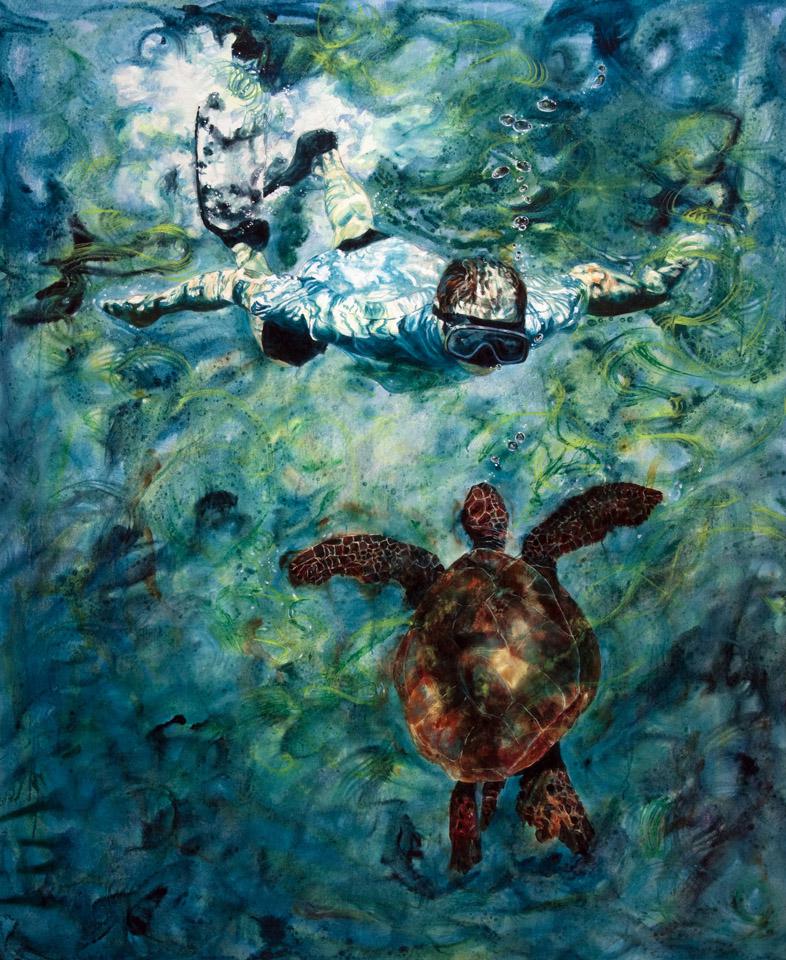
And finally, I am doing a shameless plug of my sister’s cause, ArtBomb, because today she has a stunning painting up for auction in honor of World Environment Day. Here’s what Mary Beth writes about the piece pictured above:
On Wednesday, June 5th, Artbomb will have a solo feature of the work of Vancouver artist Cheryl Fortier in celebration of the UN’s International Year of Water Cooperation and World Ocean’s Day. Cheryl’s piece, titled Hover/Suspend, is a large, immersive and transporting painting depicting a close encounter between a snorkeler and a sea turtle. The rendering of the water, and of the small swirling movements of the 2 participants in this dance of curiosity, is masterful, a balance between realism and abstraction. The scale of the piece allows one to feel submerged with the figures, an underwater voyeur watching this enchanting and touching interaction between human and animal. Cheryl paints with emotion, spontaneity and intuition. This piece will both charm you, and transform your living room!
If you are interested in this painting, or know of anyone who might be, please pass this link along to them. ArtBomb auctions last ONLY one day, so it’s a great way to acquire original, professional art for reasonable prices. I would also LOVE it if you share the link on your Facebook timeline, or Tweet about it. Check out Cheryl’s website — she is an amazing artist. I love her paintings!
Healthy African Peanut Stew
Huichol Shamanism in the Desert
It’s about time I wrote about my spiritual journey. This is not something I talk about or write about very often, though if asked, I will tell you whatever you want to know. But my spiritual beliefs are so intertwined with being an artist that I think it’s important to acknowledge and honor that part of me here. This is a beginning…
I was raised Catholic, went through a period of studying Zen Buddhism in college, and now consider myself to be a Huichol. I have been studying Huichol Shamanism since 1985, when I met Brant Secunda at the Feathered Pipe Ranch in Montana. Somewhere in there, I attended a Methodist Church where I found a nurturing community who helped me raise my two sons as a single mother. I am still connected to the friends I made along the way and thank everyone whose lives I have shared and still do share.
The Huichol say we are created from the elements of the natural world — fire, air, water and earth. Because of this, each of us is a miniature universe, a mirror of both the natural and the spiritual worlds. All the knowledge and secrets of these two worlds are inside of us and everything is perfectly arranged. Shamanism teaches us to tap into that arrangement, to understand and to live in harmony with the natural and spiritual worlds. –Brant Secunda, Dance of the Deer Foundation
Connecting to the spiritual world is part of my daily life. It’s not something I do on Sundays. It’s everyday all day. It’s in breathing. In cooking healthy whole foods. It’s in the way I greet the day or say hello to friends and strangers. It’s in writing, painting, taking photos, walking with Charlie, stroking our cat’s sleek black fur. It’s in having coffee with a friend, doing housework, laughing with Tim or planting the garden. It is being plugged in, charged up with the power of Nature, no matter where I am: in the city or in a red sandstone canyon. It is remembering that I am not separate from the rest of Creation. That everything is sacred and everything is inside me.
Three times a year, my husband and I have a special opportunity to get really charged up, with our ongoing shamanic study group in different places around the world.
For eight days this April, we stayed on a high plateau just outside of Zion National Park. This year was our seventh year near Zion, and we were able to complete five years of pilgrimages to many beautiful and powerful places inside and outside the park. I hope these photos and excerpts from some of my writings (and those of one of my favorite authors, Ellen Meloy) give you an idea of how I connect with nature — and how you can, too.
In May, 2005 and again May, 2008 I photographed a few of the places we visited after our time with our group. Here is what I wrote when I posted those photos five years ago:
The Utah desert is filled with firey colors, textural canyons, ephemeral pools that reflect the shadows and light. In springtime everything bursts with a kind of soulful joy at being alive! Although I cannot do justice to the beauty of this magical place on our planet, I tried to record how I felt while we were there … There are other photographers who have succeeded in capturing the desert’s beauty far better than I have. But for me, this was and still is a personal exercise in connection with this harsh, yet peaceful and totally alive place on Earth.
The second year our group spent in Utah, Tim and I went into the park at dawn one morning to see if we could find an unmarked canyon trail I remembered from a time I hiked it in 1988. We did find it, and it was even more lovely than I remembered. I hiked in bare feet so I could feel the skin of Mother Earth.

Dawn in “my” little canyon … we catch the first rays of sun making firey glow on sandstone beauty, the day still cool from the tattered darkness … sand cool on my bare toes and birdsong reflecting on the cliff faces in torrents of colorful notes. Everything is as still as the most peaceful place on Earth can be. Not a single other soul around except Tim and me.
Each year when we go back to this canyon, I welcome the sight of the wildflowers and the sound of the spadefoot toads. The pools remind me of a necklace of jewels connected by a thread carved in the sandstone. And each time we go, the canyon is different.

The ephemeral pools of Zion’s canyons are home to a delicately balanced community of inhabitants. The most obvious of these are the desert toads Edward Abbey described so beautifully in his book, “Desert Solitaire.” The pools fill with warm water after a rainstorm, and the tiny toads “wake” from their sleep-state to sing out in a loud chorus full of desire and need. They mate quickly, surrounded by the calls of thousands like them. The toads lay their eggs in sandstone pools like this one and the eggs hatch into tiny immature toads — tadpoles. Tadpoles must metamophose quickly into their adult form before the pools evaporate. Then they begin their cycle of estivation/ awakening/ singing/ mating/ hatching and transforming all over again.
The shape of this pool (above) looks to me, like one of the tadpoles wriggling around in the water.

The mesas creak and strain in the frigid air, audible only if I lay my ear to them. The colors in their flanks-terra cotta, blood-red, salmon, vermilion-bear the temperament of iron. Against the steel-blue sky of a summer monsoon, the ridge bleaches to white. Moonlight blues it, and bright sun turns it pale cream or, if you are making love atop it, blush pink. — From “The Anthropology of Turquoise” by Ellen Meloy

Colors bear the metaphors of entire cultures. They convey every sensation from lust to distress. Flowers use colors ruthlessly for sex. Moths steal them from their surroundings and disappear. A cactus spine glows red-gold in the angle of sun, like an electrocuted aura — Ellen Meloy, Anthropology of Turquoise
I will close with another of Ellen’s amazingly poetic observations:
… perhaps this is all that a person can try to put into her days: attention to the radiance, a rise to the full chase of beauty.
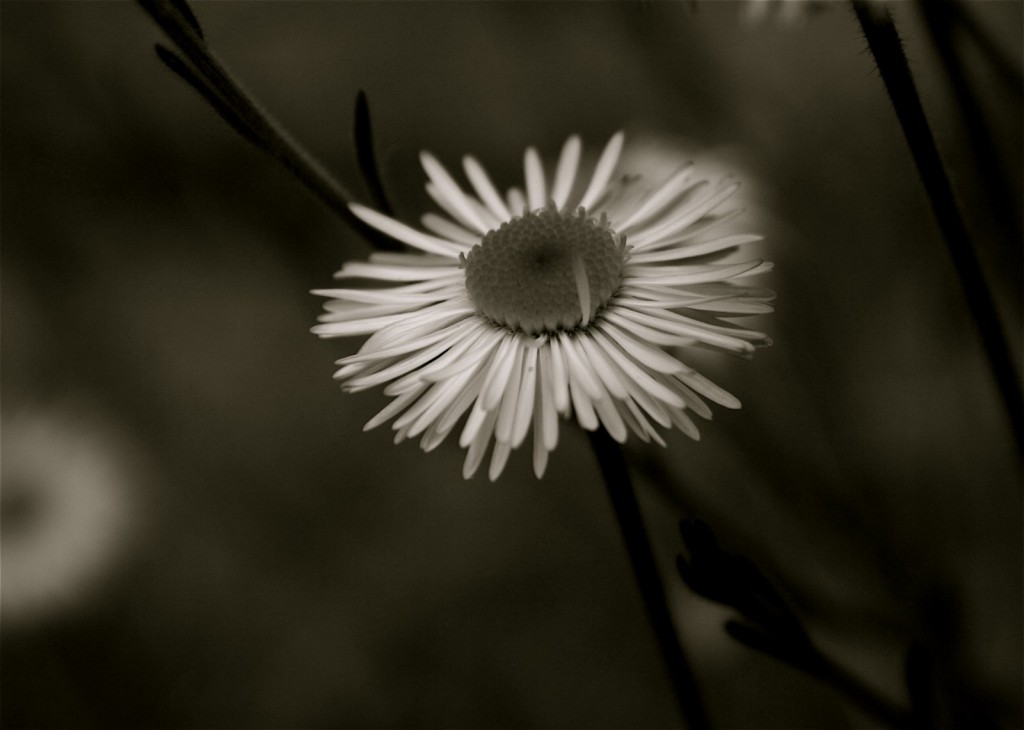
Garden Journal: Now’s a Great Time to Start One
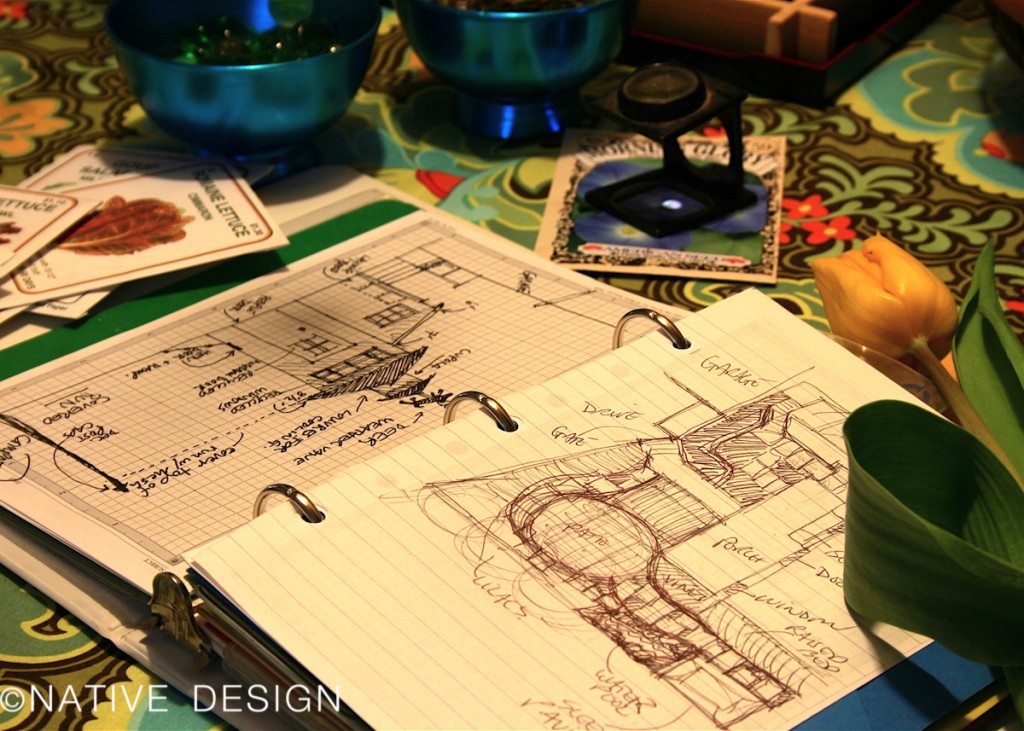
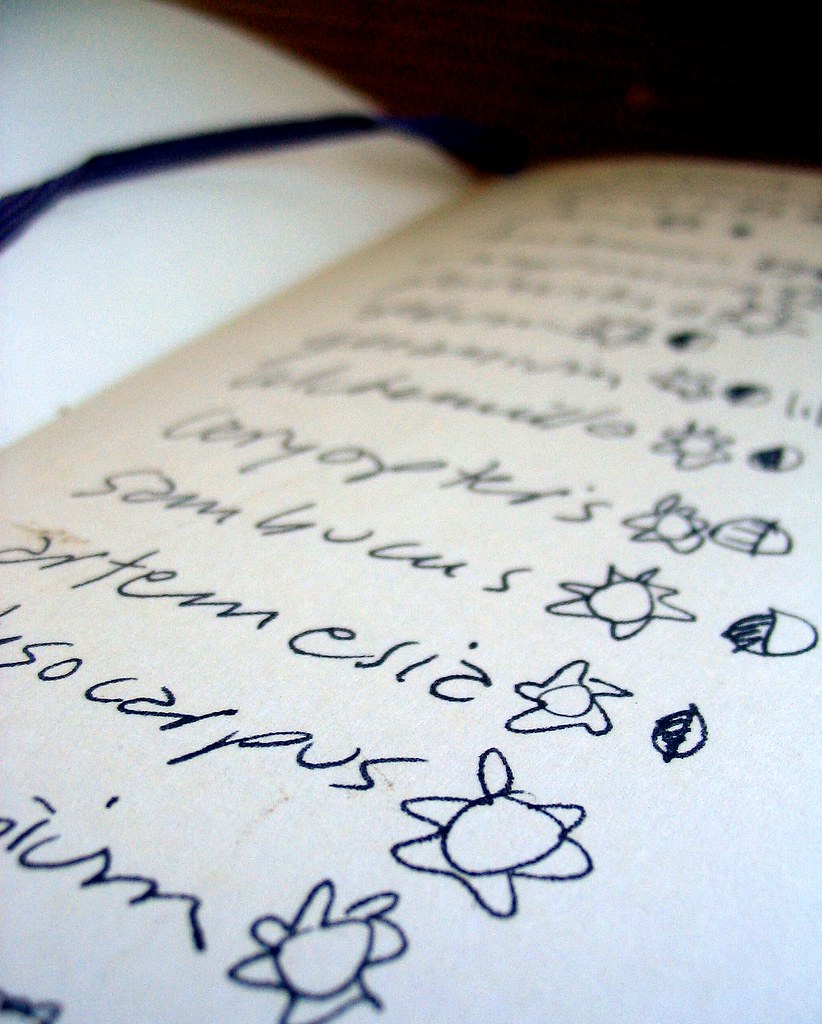 I’ve kept a separate notebook or journal for my garden for years. Off and on. I’m not as disciplined as I’d like to be about keeping track of what is planted where; which plants are blooming when; what I’ve spent on the garden … or where I bought my materials, pots, and other stuff.
I’ve kept a separate notebook or journal for my garden for years. Off and on. I’m not as disciplined as I’d like to be about keeping track of what is planted where; which plants are blooming when; what I’ve spent on the garden … or where I bought my materials, pots, and other stuff.
Sometimes my garden journal is just a few pages in my regular sketchbook or journal. For the last few years, I’ve used a smallish 3-ring binder pages I have customized and punched to fit. I use different kinds of paper depending on what I’m recording on it: graph paper for recording my veggie plots and for sketching ideas for construction projects. Heavy sketch paper for botanical and nature sketches and for just doodling ideas. Vellum envelopes with holes punched in them, for keeping plant labels and other odds and ends (receipts, etc)… plastic sleeves with 3-holes, these are handy for seed packets, photos, loose seeds, etc.
I have my journal divided into sections with pocketed dividers – the pockets come in handy for keeping loose stuff. If you make your own journal, you can make sections to fit the kind of information you want to keep about your garden. Here are some ideas for record-keeping and inspiration:
- a plan view of the garden, drawn on plain or graph paper: this is not only to remember the layout of your plant beds and locations of special plants — but also to help you imagine improvements you might want to make
- weather records for our city and growing zone: first and last frost dates, rainfall, snowfall, and extreme events such as hail storms (which always seem to hit us hardest the week after we have set out our basil and tomato seedlings!)
- seed packets and plant labels: if you have a sheet for each plant, you can keep the packets in envelopes taped to the back of the sheets. Otherwise, a separate section for seed packets and plant labels is a good idea. I like to keep track of the nurseries where I bought potted plants
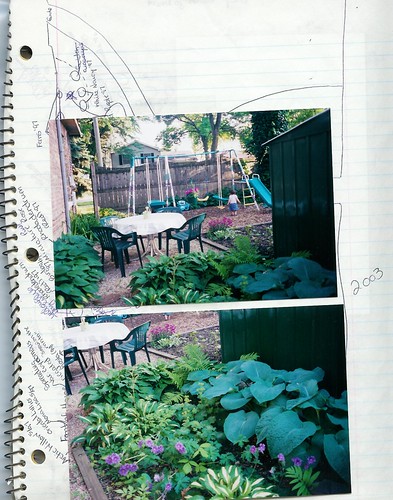 photos and/or sketches to document what’s growing throughout the year. I pair the photos with sheets on the individual plants. I also have a section for just beautiful photos of my garden
photos and/or sketches to document what’s growing throughout the year. I pair the photos with sheets on the individual plants. I also have a section for just beautiful photos of my garden
- garden tasks: wish I were organized enough to write down the dates I did (or should have done) certain tasks like weeding, planting and pruning. It would help with planning
- wish list: this is a fat section for me — there is always something I’d like to buy or make myself: wind chimes, plants, compost, a teak recliner, porch swing … or hardscape improvements I want: a deck, french doors, a little patio … dream on. Writing these things down or keeping clippings and photos helps me remember and prioritize. I had a garden pond on the wish list for years. A few years ago, my son, Mickey helped me make it a reality. So it works!
- clipped or photocopied articles, reference stuff from books and gardening handouts. This is a good place to keep reference materials from garden lectures or how-to courses, or instructions for making things for your garden
- use the journal to keep pressed leaves and flowers from your garden.
- Instead of pressing the plant parts, if you’re feeling creative, make sunprints using light-sensitive print paper.
- I keep a running list of wildlife I’ve seen in our garden, which is a certified wildlife habitat garden now
- quotes about gardening and my thoughts inspired by connecting with my garden
- ideas for cooking from the garden and recipes for salsa, pesto, quiche…
- I try to keep track of how much I spend in the garden. It’s always more than I thought! Sometimes I don’t keep the receipts, I just write the costs down kind of haphazardly
some links:
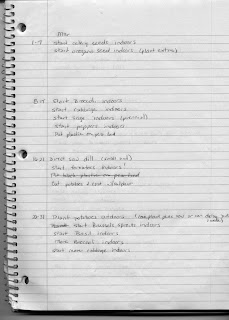 lots more information about materials you’ll need and how to get started –they even have some templates you can download for plant record-sheets
lots more information about materials you’ll need and how to get started –they even have some templates you can download for plant record-sheets
- Keeping a Garden Journal: what to use for a garden journal and what to keep in it
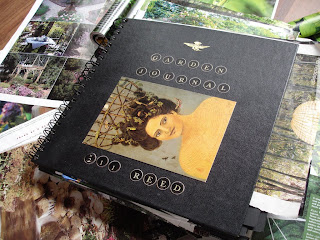 Bitter Betty: I love her sense of humor and highly recommend this blog post. Will her garden ever sit up and pay attention?
Bitter Betty: I love her sense of humor and highly recommend this blog post. Will her garden ever sit up and pay attention?
 Journaling Life has some good links to resources, along with ideas for what to keep in your garden journal. Thank you to Denise, Leslie, Gayla, Lisa and BitterBetty
Journaling Life has some good links to resources, along with ideas for what to keep in your garden journal. Thank you to Denise, Leslie, Gayla, Lisa and BitterBetty
Please click on the photos to find links to their photo pages.
